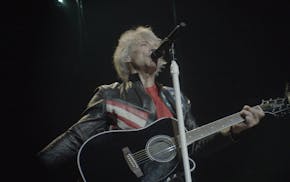When Maurice Sendak died in 2012, the New York Times obituary noted that he is "widely considered the most important children's book artist of the 20th century." His output was remarkable: He wrote or illustrated more than 100 children's books, creating the tender renderings of the family in the popular Little Bear series by Else Holmelund Minarik and the pen-and-ink sketches of boisterous children that accompany Ruth Krauss' text in "A Hole Is to Dig." For these alone, he deserves to be remembered with fondness.
But it is the works that Sendak wrote and illustrated — most particularly the trilogy of "Where the Wild Things Are," "In the Night Kitchen" and "Outside Over There" — that made him the man who, the New York Times declared, "wrenched the picture book out of the safe, sanitized world of the nursery and plunged it into the dark, terrifying and hauntingly beautiful recesses of the human psyche."
It is this man — the man who claimed the picture book as his "battleground" — and the books in which his wars are won that Jonathan Cott explores in "There's a Mystery There," an intelligent, provocative literary study. Drawing on personal interviews with Sendak and four "companion guides" (a Freudian psychologist, a Jungian psychologist, an art historian and playwright and longtime Sendak friend Tony Kushner), Cott creates a kaleidoscopic reading of the interplay between Sendak's life and art, unpacking the powerful magnetic pull that his works exert on children and adults alike.
In the interviews, Sendak is an articulate, self-reflective guide to the "dark recesses" of his childhood: ill health (diphtheria, measles, whooping cough, scarlet fever, double pneumonia), poverty and frequent moves from house to house after his father, Philip, lost everything in the Depression. Sendak's mother, Sadie, was "continually anxious, depressed and withdrawn, but also gruff, abrupt and rejecting."
Finding no sense of safety in his parents, the young Sendak was traumatized by the Lindbergh kidnapping and devastated by the child's death: If a rich gentile baby could be killed, he wondered, what chance could he, a poor Jewish kid, have of surviving?
In the absence of parental empathy, Sendak credits his brother, Jack, as his "protector and savior," drawing pictures, telling stories and creating a fantasy world with him. "Sendak once remarked that he was obsessed with the question of how children were able to survive," Cott writes. His answer was that "they survive when they exercise their creative imagination."
"Dreaming, daydreaming, fantasy, reverie, storytelling, music-playing, or song-singing" are transformed into profound works of art in "Where the Wild Things Are," "In the Night Kitchen" and the third work in the trilogy — the most complex, most personal and, for Cott, most mesmerizingly worthy of deep reading — "Outside Over There."
Cott seamlessly interweaves readings of Sendak's working process and final products, allowing them to reciprocally illuminate each other: The "companion guides" are used deftly to open possibilities without dogmatism. Images from Sendak's books are reproduced in profusion. Poring over them is a pleasure in itself. Poring over them in this company profoundly deepens our appreciation of the power of art to help us bravely face our monsters, transform them and emerge ourselves transformed.
Patricia L. Hagen teaches English at the College of St. Scholastica in Duluth.
There's a Mystery There
By: Jonathan Cott.
Publisher: Doubleday, 242 pages, $30.

The Biden administration is tweaking rules on airline fees and refunds, saying it'll help consumers

3 hearty salads to kick off salad season
Ask Amy: Late mom's behavior still an issue

TV review: Bon Jovi documentary goes down in a blaze of boredom

